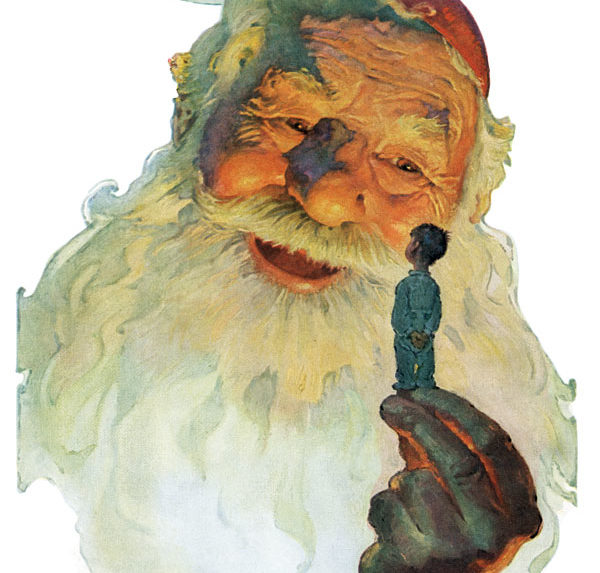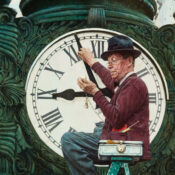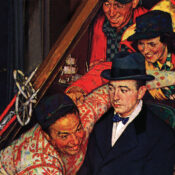To us mere mortals, the idea of fame is exhilarating. The life of a celebrity, we imagine, is a world where everyone knows you, worships you, and hangs on your every word. It’s easy to forget that fame can also be a burden. Strangers come up to you while you’re dining in a restaurant and speak to you as if they know you. Most celebrities ultimately wish they could just be regular folks again.
By the 1920s, Norman Rockwell was a major star. And, like many other public figures before and since, he relished nothing more than the opportunity to get away from it all. He needed to escape the shackles of celebrity to stimulate his creative juices.
He found that freedom at Gibson’s Point at Louisville Landing—a town in upstate New York along the St. Lawrence River. It was a sleepy town with not much going for it aside from a small dance hall and the ferry dock where passengers boarded for the short voyage across the border to Canada.
Summering at Gibson’s Point, Rockwell shed his big-city background and fame. He retrieved drinking water from stone wells, carried firewood, and swam and fished in the river. It made him feel like a character in one of his illustrations. “This place is like a series of living Post covers—and I’m in it,” he told a young man who also visited there.
More than anything else, he enjoyed being treated like one of the local boys who sat on the porch of the general store in the evenings, listening to their elders expound on the comings and goings of the ferry. The stories told by these hard-working, honest men ignited ideas that later blossomed into Post covers. One of the themes that emerged was a return to innocence, as if the very process of quietly observing the elders of the town transported Rockwell back to his youth. It was while sitting on that porch that Rockwell was inspired to create the December 3, 1927, Post cover (pictured) celebrating the kid in all of us. The benevolent Santa is modeled on John Malone, a father figure to Rockwell and his host at Gibson’s Point.
Become a Saturday Evening Post member and enjoy unlimited access. Subscribe now




Comments
With his artwork, Norman Rockwell made everybody who observed it happier. God Bless him. A Merry Christmas to him, wherever he is.